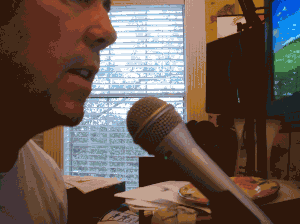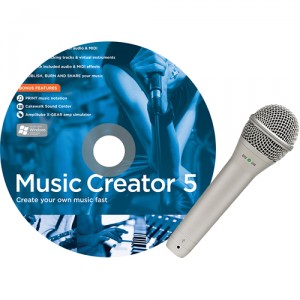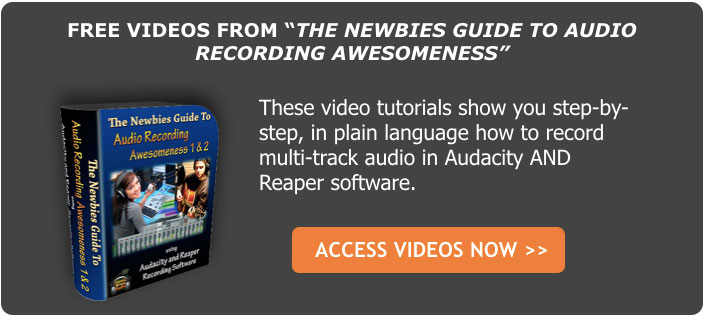Voice Over Recording Using Audacity and a $59.00 USB Mic
In order to demonstrate how professional sounding voice over recordings can be made (and in turn, voice over jobs be gotten) with very inexpensive home recording studios, I decided to do a quick demo. Take a listen to the below recording. It was recorded with a home studio that would cost you about as much as the USB mic I used, which is to say $49.00. Uh, huh. You heard right. If you already have a computer, you can set up a recording studio that can produce voice recordings like this for only about $59.00. I’ll say it one…more…time just for effect. You can start a home recording studio for $49.00!
I recorded about a minute or so of an article I wrote to create this demonstration.
Recording Gear Used
1. A run-of-the-mill Windows XP (Intel Core Duo, 3 GB RAM)
2. The Samson Q1U USB Microphone
3. Free recording software called Audacity
That was all I used. Here is how it came out:
The Step-By-Step
1. I plugged the USB mic into a USB port on my computer
2. I opened Audacity
3. I selected “Samson Q1U” as my recording device under “Edit/Preferences” in Audacity
4. I clicked the “Record” button in Audacity and spoke into the mic.
5. I performed the following edits on the recorded audio using Audacity FX tools:
a. Equalization and high-pass filter to reduce p-pops and other overly bass-y bits
b. Compression to even out the volume
c. Silencing and Cutting audio to cut out retakes and silent bits that were a little too long
d. Normalization to turn up overall volume to the point where the loudest bit of audio is JUST below 0 dB (the loudest that digital audio can be before distorting)
That was it. Then I just saved it as an mp3 and uploaded it.
If you’d like to get started learning to do this, check out our articles and video tutorials. Or you could snag The Newbies Guide To Audio Recording, our main tutorial course.




I have bookmarked the Sampson web-site based on the comments left at the site .
Never could get the other USB($30 +or-) mike that you suggested to work properly, so returned it to Guitar Center. This time I’m waiting till I have the cash(even if I have to really use a debit card in order to buy it online). Keep up the great work and excellent posts.
Robert,
I am now recommending the Samson Q1U, especially as it has come down in price to $49;). Sorry the other one didn’t work out for you. Thanks so much for your kind words!
Ken
Voice Over Recording Using Audacity and a $49.00 USB Mic https://t.co/1CwklcL via @en
So, while interviewing for a new job, the boss found out I’d done some radio work about 25 years ago, liked my voice, and asked if I could produce some video tutorials for a new software product they’re developing. I said “I’m not sure, but I can give it a try.” They hired me, and last week they told me to whip up a tutorial describing a new feature.
Long story short, I’m glad I found your site. I installed Audacity, and bought the mic you recommended on this page, and it’s as good as you say. Results are great so far — the first video is now in their hands, and they’ve asked for two more.
Eric,
That’s awesome! Thanks for the feedback:-).
Good luck!
Ken
Voice Over Recording Using Audacity and a $49.00 USB Mic https://t.co/J3BNTYy via @en
Love this tutorial. When you speak though, I can still hear the background hiss. And Audacity has never been good at removing that. No software, not even Adobe 3.0 has ever been successful at removing the small hiss that comes from everywhere, your PC, your monitor, etc. If anyone here has any advice about that, please reply to this.
Wency,
You’re absolutely right. I wanted to record the early tutorials (you’ll hear little-to-no hiss in the later lessons;)) using the same gear as I was touting, that is a $5.00 pc mic, a built-in sound card, and Audacity. And you’re also right that you can never get rid of the noise if there is any in the signal…and there always is. The point to the early lessons was to show how much CAN be done with the $5.00 studio. Is it noise-free? No way. But is it better than the audio a lot of people make with much more expensive gear? Many who have compared the two clips on the homebrewaudio.com front page say “yes.”
As for advice for killing the noise after it has been recorded (with the understanding that preventing it getting recorded in the first place is ideal), noise reduction programs frequently leave an under-water-sounding swirly artifact if it has to work too hard. Keep the noise low enough, and you can get rid of most of it without all the weirdness. You may have to play with the settings and NOT apply 100% of the effect. I use that in combination with gating, which basically silences the spaces between the audio. Again, if the noise was low enough to start with, gating will also make it sound better.
Hope that helps. And thanks for the comment!
Cheers,
Ken
I wonder, when doing multi tracks (instruments, for example), using a
USB mic plugged directly into a computer, how do you hear your previous tracks?
David,
You can either use your computer’s sound card or the headphone jack that many (though not all) USB mics have built into them. Just make sure you don’t have software set up to RECORD those previous tracks when recording new ones. That’s the default now with Audacity, I think. It’s definitely the default in digital audio workstations like Reaper. Hope that helps.